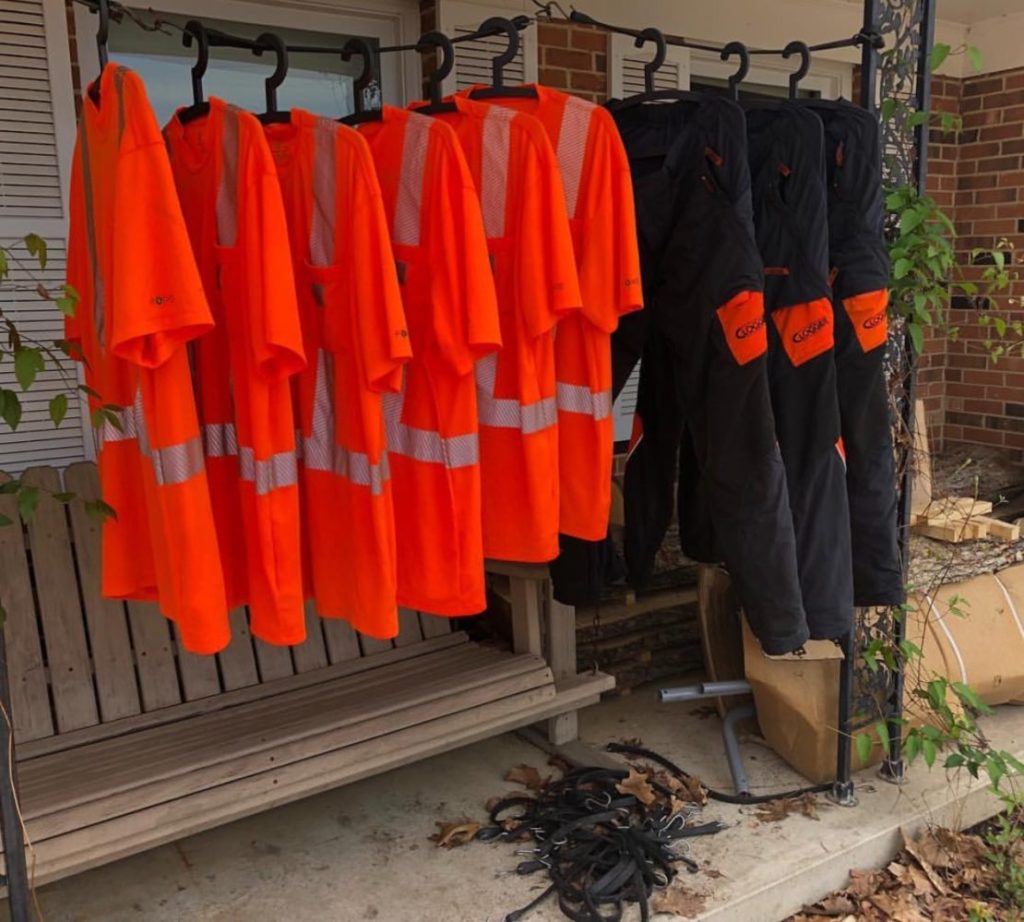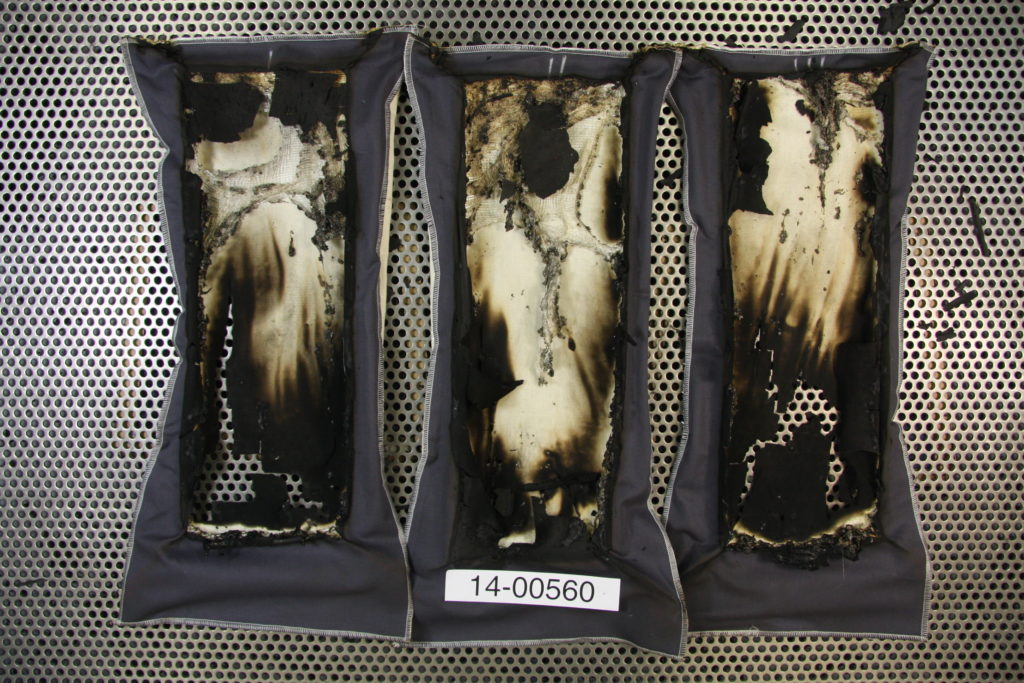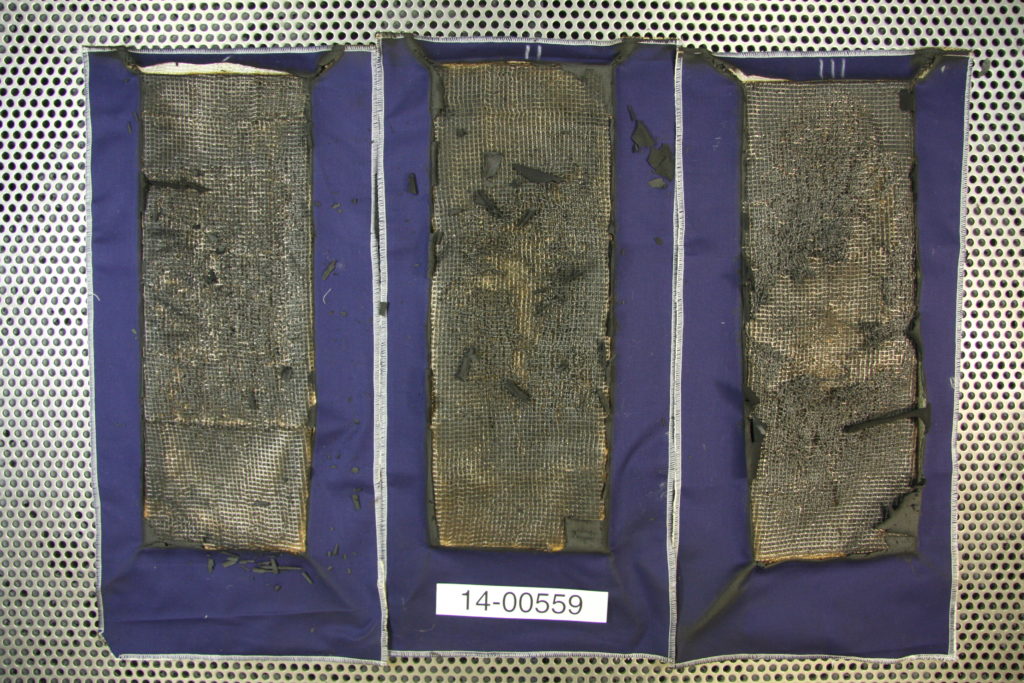No one likes making mistakes and when it comes to caring for, choosing or wearing your chainsaw protection, that is no exception. Making any mistake can leave room for error and given chainsaw chaps and pants have the potential to save your life – it is important you get it right.
For those operating in the professional tree care industry – whether you are a seasoned arborist, experienced groundie or in charge of procuring safety for your crew, you will no doubt be familiar with chainsaw protection.
In this post we will provide 18 examples of common mistakes that can occur when choosing, using and caring for chainsaw chaps and pants and some tips on how you can avoid making these mistakes.

Why is chainsaw protection important?
A chainsaw operator has three lines of defence: education, good technique, and personal protective equipment (PPE). When the first two fail, PPE can save your life.
The thought of chainsaw injuries resulting in death is very confronting. In 2012, 243 workers died while engaging in tree-trimming and clearing activities (OSHA, 2012). The impact chainsaw injuries can have on a business is huge. Not only can it look unprofessional, but there is also lost income and it can hinder ability to carry out future jobs efficiently. In most instances, serious injury or fatality as a result of a chainsaw can all be prevented with the use of PPE. So, what are the 18 Top Mistakes with Choosing, Using and Caring for Chainsaw Chaps and Pants?
1. Believing you don’t need to wear chainsaw protection
There is always a chance you may never strike yourself while operating a chainsaw but for those that have and were wearing chainsaw PPE, they would be the first to tell you that PPE saved them from serious injury and/or death. Investing in chainsaw PPE is a small price to pay for peace of mind. If ever given the choice, always say yes to chainsaw PPE.
2. Thinking that you need to be dangerously hot to be safe
Tree care professionals are exposed to the outdoor elements on a daily basis. Heat related illness symptoms include faintness, dizziness and fatigue. Death is even a possibility. Why would you increase the chances of a heat related illness in the summer months in the name of safety? The old belief that hotter and heavier means safer no longer applies when it comes to chainsaw fabric.
New technical chainsaw fabrics with innovative venting and technical outers mean that chainsaw pants and chaps no longer need to be dangerously hot. Some fabrics even have what is regarded as ‘cooling capabilities’ for their ability to transfer heat away from the body and allow circulation of air. The advanced fibre, Nilit Breeze, has been proven to lower body temperature by almost 1 degree (research conducted by Centexbel Textile Research Centre, Belgium). In addition, reduced weight along with stretch fabrics make the apparel easier to work in.
Read our detailed post on the risks of hot chainsaw pants and chaps.
3. Not washing your chainsaw protective gear regularly
Modern chainsaw protective fabrics are engineered to withstand regular washing without any negative impact on performance. Chainsaw protection should be washed regularly for a number of reasons. The fibres in the chainsaw fabric need to pull out easily to be effective upon contact with a saw. Build-up residues in the fabric can prevent this, not to mention also making you possibly appear unprofessional.
As well as investing in some Citrosqueeze or Nikwax, most garments should come with care instructions. The recommended method for drying is to line dry. It is good practice to make sure this is out of the sun to prevent UV damage to the outer. If you are still unsure, refer to our handy guide.

4. Not understanding your certification standard
European standards are totally different from North American standards – but not necessarily better. The main reason for the belief that European standards are better is the chainsaw speed perceived to be higher. This is because people directly convert the most common European Class 1 20 m/s performance level to feet/min which makes it seem like the chainsaw speed requirement in Europe is much higher than North America.
However, a straight mathematical conversion is not possible as the test methods are completely different. The European method uses power off while the ASTM method has “power on” when the saw is dropped on to the specimen. Other differences include fall height, chain size, specimen clamping systems etc.
Related to this belief, is that a product certified to the European standard does not need to be certified in North America because of its perceived higher performance.
Clogger’s chainsaw PPE is tested and manufactured to certain specifications with strict quality control to keep you safe on the job. Check out this article we carefully put together to help explain the different standards for chainsaw PPE – a summary of global chainsaw protective standards. You should be wearing product that is certified for your market and meets its specific requirements.
5. Not buying chaps with enough straps
It can be tedious having more buckles to do up and undo again on your chaps but when it comes to safety – the more buckles the better and the strap placement is very important. Chainsaw chaps that are not properly attached can not be effective as the chain will instantly grab and pull the material out of the way making the user vulnerable. Likewise, too much of a gap between fastening straps can allow the fabric to rotate excessively if the chainsaw hits between the straps. Some chap models do not have straps at the bottom hem of the chap. The protection ends at your bottom strap so any material below the bottom strap adds weight but offers zero protection.
In summary, chaps must be fastened securely. Any damaged buckles must be replaced before use. Ensure that the chaps you wear have fastening straps at to very bottom of the leg for full coverage.

6. Thinking chainsaw protection does not work with battery powered electric saws
Various experiments have been carried out with some concluding that chainsaw protection does not work with battery powered electric saws.
Firstly, some protection is always better than no protection. Secondly, we can only speak for our own chainsaw protection but the testing that we have in our testing lab shows that our chainsaw protection is effective with battery powered electric saws.
Check out the video below featuring the Stihl’s most powerful battery electric saw to date – MSA 220C used on Clogger’s Arrestex HP technical chainsaw fabric which is the chainsaw fabric used in most of our products.
7. Thinking chainsaw pants are too hot to wear climbing
Chainsaw fabric does add weight and reduces breathability. However, a lot of progress has been made to mitigate this.
- Airflow
Fixed or zipped vents designed to allow for optimal air flow around the legs.
- Outers
Technical outers with extreme breathability and 4 way stretch to reduce the effort needed to do the work.
- Chainsaw fabrics
Chainsaw fabrics made from modern technical fibres are dramatically lighter plus outperform traditional, heavier fabrics.
- Design
Modern designs and construction focus on reducing weight and improving ease of movement.
We know of climbing arborists successfully working in chainsaw protective pants in hot and humid climates like Florida in the United States and Northern Queensland in Australia.
Check out Brett’s story about his Dad.
8. Believing all chainsaw pants and chaps need Kevlar
Kevlar is just one of the cut resistant fibres commonly used in chainsaw protection but it does have a limited useful life as Kevlar degrades over time. Some other disadvantages with Kevlar include lack of flex resistance and poor UV resistance. Other cut resistant fibres like UHMWPE (brand names include Dyneema and Spectra) are one third lighter and are preferred for technical chainsaw fabrics.

Traditional chainsaw fabrics do not have cut resistant fibres but use low cost fibres like polypropylene and nylon. To meet the same performance levels requires much more bulk of fibres (usually more layers) to clog the chainsaw and therefore they are significantly heavier.
9. Thinking FR chainsaw pants and chaps won’t catch fire
Many fire resistant chaps and pants have a FR outer but have a highly flammable chainsaw fabric underneath. With an arc flash, even an arc-rated fire resistant outer can be destroyed exposing the highly flammable chainsaw fabric. This fabric ignites resulting in molten dripping plastic causing terrible burn injuries.
See examples of what happens with an FR outer but synthetic chainsaw fabrics inside after an arc flash test.


Clogger’s Arcmax FR range of chainsaw pants and chaps uses Arrextex FR which is fully FR and will never burn or melt.


10. Believing you can fix your chainsaw pants and chaps outer rips with heat
Heat can severely shrink or even melt outers made from fabric like Nylon. Additionally, there is a risk is that the chainsaw fabric inside will melt or that the outer will fuse with the chainsaw fabric. The chainsaw fabric will not function if the fibres are damaged or if they can not easily pull out. Use of heat to repair rips is especially risky.
Outers on chainsaw pants and chaps are best repaired by sewing the edge of the tear together or sewing on a patch as long as the outer is not sewn to the chainsaw fabric. It is important that the chainsaw protective layers are not sewn through. Check out this video on how to repair rips and tears.
11. Thinking you are not required to wear chainsaw pants when climbing in the US
There is a general belief that you do not have to wear chainsaw pants when climbing in the US. The actual OHSA rule states the following:
1910.266(d)(1)(iv)
The employer shall provide, at no cost to the employee, and assure that each employee who operates a chain saw wears leg protection constructed with cut-resistant material, such as ballistic nylon. The leg protection shall cover the full length of the thigh to the top of the boot on each leg to protect against contact with a moving chain saw.
This requirement does not apply when an employee is working as a climber if the employer demonstrates that a greater hazard is posed by wearing leg protection in the particular situation, or when an employee is working from a vehicular mounted elevating and rotating work platform meeting the requirements of 29 CFR 1910.67.
It is definitely questionable whether an employer can demonstrate “that a greater hazard is posed by wearing leg protection in the particular situation” given that modern chainsaw pants have greatly reduced heat illness risk.
12. Keeping your chainsaw pants too long
Wearing PPE that is too long (or too short) is not practical nor comfortable. Correct fitting chainsaw pants can also make you look more professional. If the pants are too long, there may be a small amount of hem that can be ‘taken up’ by yourself (or someone handy with a sewing machine) or by taking it to your local sewing alteration business. If the extra length exceeds this, it might be time to invest in some new chainsaw pants. Your life could depend on it.
13. Thinking backyard testing is useful
Usually when chainsaw PPE is tested, it is done in a controlled setting so the testing is to the standard that the PPE is getting tested against. When you test in your backyard, you are not testing to these same standards. Quite often you will see videos of people testing chaps online and they have not done up or tightened all the buckles. There are many variations with differing results.
14. Wearing chaps or pants that don’t fit
Sizing is everything here. If you are wearing chainsaw pants or chaps that don’t fit you correctly then you are running the risk of injury if a chainsaw comes into contact with your PPE. When it comes to chaps, they carry a higher risk profile than pants. If the straps are not attached and properly fitted it can result in the chap rotating with chainsaw contact. The less chance your PPE has to rotate out of the way the better. Baggy pants may be more comfortable but are not necessarily safer. Check out the Clogger sizing guide here.

15. Choosing chainsaw chaps when you need pants
When it comes to the ‘do I wear chainsaw chaps or pants?’ question it just comes down to what you are planning to do while wearing them. If you are using a chainsaw most of the day or working around a chipper, then pants would be ideal. Pants also come with added advantage of having a more individualized fit and do not have a snagging hazard like chaps would when tree climbing. There are several different types of pants available specifically for climbing and groundwork. Pants also offer a superior level of comfort over chaps. If you would like to read more on the subject, check out our blog post.
16. Buying chainsaw pants without stretch
Welcome to 2021. Technology in textiles is advancing frequently so in this day and age why would you put up with PPE that doesn’t move with your body when you do? Depending on the activity, chainsaw pants without stretch can also be dangerous as they can restrict movement. Almost all of the pants in the Clogger range have the benefit of stretch not to mention the comfort that comes along with wearing these.
17. Choosing the wrong pant for the job
You have a set of needs that must to be met when selecting the correct PPE for the job at hand. Different PPE has different features specific to the needs of the wearer. For example, it isn’t beneficial to purchase a climbing specific pant if you are a fulltime groundie and vice versa. Same goes for temperature. All chainsaw PPE has some heat related element to it with some being better at keeping you cool in hot conditions like the Zero. Just like wearing a cold weather specific pant in the summer is not a good idea. You will only end up overheated and disappointed.
18. Not maintaining your chainsaw chaps and pants
Not many people enjoy this side of owning PPE but checking the gear is critical. If saw pants and chaps are not maintained correctly, you may as well be wearing no PPE as they may not protect you when you need them to. Check out this handy guide that has everything you need to know when it comes to maintenance.

Bonus misconception for British Columbia chainsaw users
3,600 feet/min is not the minimum requirement. The 3,600 feet/min threshold speed is based on a test rig and method that has been discontinued. The only current feet/min standard under Worksafe BC Schedule 8-A, section 8.21 is 3300 feet/min when tested according to ASTM F1414.
Summary
We have gone over multiple ways you can improve your knowledge on chainsaw PPE and this in turn will help keep you safer and looking professional out on the job. Using the 18 tips outlined above, you will be able to get the most out of your chainsaw chaps and pants.
Do you have any questions regarding these tips? We are always here to help. Comment below. Also, feel free to share this post with anyone who you think might find it useful.

Great article with some awesome information! Thanks for posting guys!
Nice article with good points. Suggestion for point #5: need to distinguish between corded ‘electric’ and battery-powered ‘electric’ chainsaws to avoid confusion.
Good point. We’ll make the edit.
I see many climbers with climbing chainsaw protection pants use them for ground work as well. My question is do climbing chainsaw protection pants offer the same protection as the more bulkier wrap around protection. Lets say using a ms201 in the tree verses using a 661 on the ground.
There are a few things here. First, bulkier protection does not mean increased protection. Low cost chainsaw fabric uses inexpensive fibers like polypropylene. The pads need extra material to pass the standard since most of the fibers are cut. Technical chainsaw fabrics like our Arrestex HP uses cut resistant fibers. Arrestex HP use UHMWPE (Dyneema) for example. This means that fewer fibers are cut so a larger percentage of fibers are available to clog the sprocket. There is also an increased braking effect. The result is that a lighter, thinner fabric can outperform a thick heavy fabric. The fabric that we developed (Arrestex HP) tests to 3,500 ft/min according to test method ASTM F1414-19 which is 750 ft/min about the US standard. We use Arrestex HP is all the pants and chaps that we offer in the US. On the question of coverage, having front only or front only with calf wrap protection is just a choice. We offer both options on most of our chaps and pants. We see climbers using calf wrap pants and ground workers using front only protection. All our products exceed the US standard with coverage from the waist to ankle. Finally, chainsaw protective products are certified to a standard by a third party. Chainsaw pants and chaps are not rated at different levels to match saws. The overall idea of a standard is that the standard is set and then cut through injuries are monitored. The standard is working if the cut through injuries are very low given the saws in general use. One more general point. Chainsaw protection does not guarantee that there will be no injury in a chainsaw strike. Chainsaw protection does mean the severity of the injury will be greatly reduced. I hope that this helps.
Thanks for this article. I was trying to chose between chaps and pants or trousers as we Brits call them 😂. There are some Stihl chaps which zip up and so provide close to 360 protection.
I’m not sure how much value you put on front and back protection.
Hi, in our view front protection is more important than back protection. Front protection is mostly where accidents will occur. Calf injuries would happen more than injuries to the back of the thighs. So having calf protection might be a consideration if there is a risk of this happening.